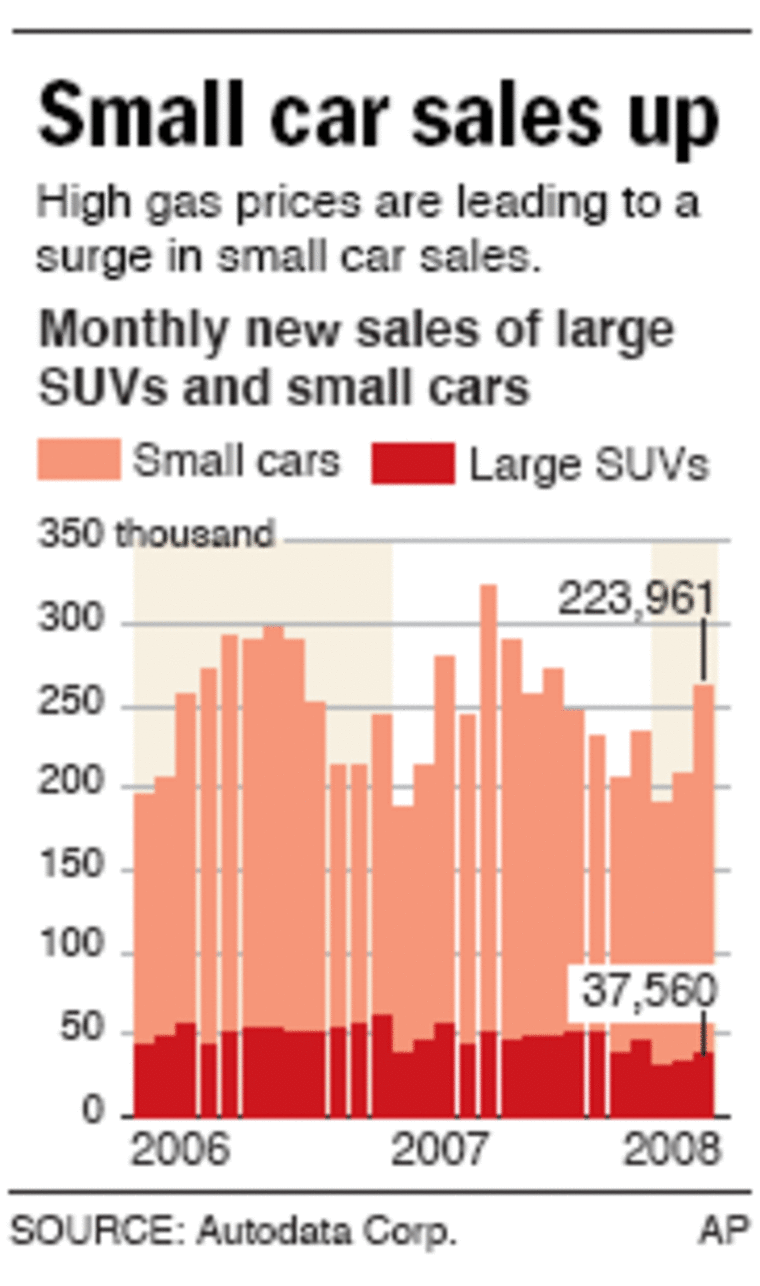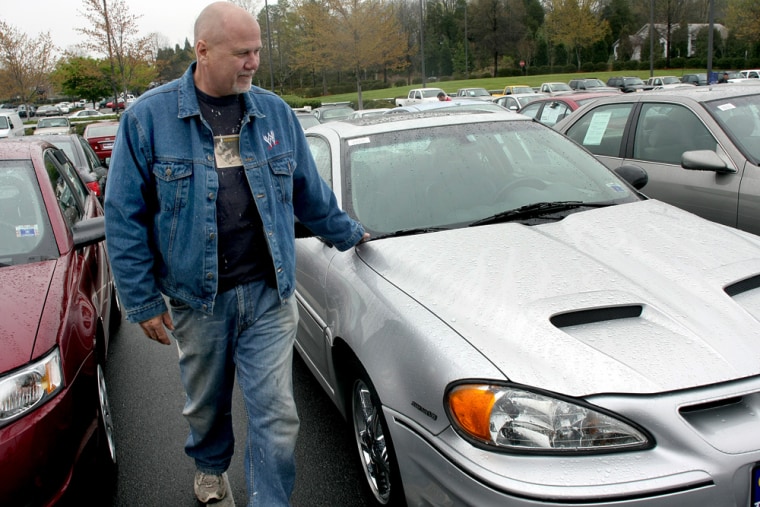Scott Piechocinski roamed the rows of a CarMax dealership in Charlotte, N.C., on a recent afternoon, searching for something small to replace his son’s 2001 Nissan Pathfinder sport utility vehicle.
He’s not alone: As gas prices marched higher and now top $3.50 per gallon across the nation, car buyers across the country increasingly are abandoning SUVs and pickups in favor of smaller crossovers and cars.
“Fuel is money,” Piechocinski said. “You have to be realistic.”
The trend also is showing up globally and could rival the industry upheaval that followed the last big oil price shock in 1980. That earthquake caught Detroit automakers lacking in fuel-efficient models buyers were demanding and set the stage for the rise of Asian competitors such as Toyota and Honda Motor Co.
General Motors Corp., Ford Motor Co. and Chrysler LLC rebounded in the 1990s when fuel was relatively cheap and they piled up big profits selling SUVs and pickups. But now history is repeating itself — with a vengeance.

April sales results to be released on May 1 are likely to show an even more pronounced shift, predicted Jesse Toprak, chief industry analyst for the auto information site Edmunds.com. “That’s simply a function of the dramatic increase in oil prices that we’ve seen in the last few weeks.”
The trend away from SUVs started well before gas prices began climbing in 2005, in part because of the introduction of “crossover” vehicles — those with SUV styling but built on the more nimble and fuel-efficient car chassis. SUV sales peaked at 3 million in 2003; they’re expected to fall to half that number this year, and the change caught Detroit unprepared.
“It happened too rapidly for the American automakers to take sufficient action,” said Aaron Bragman, an auto analyst for the Waltham, Mass.-based consulting firm Global Insight. For example, 74 percent of the vehicles Chrysler sold in the U.S. last year were trucks and SUVs, compared to 42 percent at Toyota Motor Corp.
Now owners of SUVs and other gas guzzlers who’ve seen the price of a fill-up climb sharply are getting a second shock when they try to trade in their behemoths. Used car dealers don’t want the big vehicles on their lots anymore because hardly anyone is buying them. Some won’t take them at any price.
Small cars are now the largest segment of the U.S. auto market, accounting for 18 percent of new car sales. Last year U.S. consumers bought a record 2.8 million of them, and with sales up 4 percent in the first quarter this year, the record almost surely will be shattered.
Buyers want fuel efficiency
In the U.S., gasoline prices are driving the small car boom, but worldwide, it’s people in emerging economies gaining wealth, said Mike DiGiovanni, GM’s executive director of global markets and industry analysis.
“A middle class is starting to develop, and they’re trying to move up scale from smaller cars to the larger compact-size cars,” he said.
U.S. buyers, even when they pick larger cars, are going for more fuel-efficient engines.
Six-cylinder engines used to command the lion’s share of the market, but 38 percent of buyers sought four-cylinder engines in the first quarter, the highest since Westlake Village, Calif.-based marketing and consulting firm J.D. Power and Associates began collecting such data in 2002.
That directly affects automakers’ bottom lines: A large vehicle with a V-8 engine can command $8,000 more than one with a 6-cylinder, in part because additional luxury features are often packaged with the larger engine, according to J.D. Power auto analyst Jason Rothkop. By comparison, there is a discount of $4,000 when a buyer moves down from a 6-cylinder to a 4-cylinder.
Demographics also play a role. Baby boomers are trading in larger vehicles as their nests empty, and their children are now of car-buying age. Half of the next generation will pick small cars for their first set of wheels, said George Pipas, Ford’s top sales analyst.
“Gas prices are important because they’ve accelerated these shifts, but the shifts were going to happen anyway,” Pipas said. “SUVs were not going to roam the Earth in this decade as they did in the 90s.”
Pickup sales also tumbled with the recent downturn in home construction, since they are often used as work vehicles. The weakened economy and falling home values have played a role in the decline of SUVs and pickups.
“We see our consumers coming into our dealerships and wanting to trade down into a lower monthly payment,” said Steven Landry, Chrysler’s vice president of sales.
A growing number of SUV owners, like Yumberto Menicocci, are leaving the segment altogether. According to J.D. Power, nearly a third of buyers who traded in a mid-sized SUV picked a small crossover or compact car in the first quarter of this year. Just 5 percent upgraded to a larger SUV.
Menicocci, a resident of the upscale Miami suburb of Palmetto Bay, recently placed his 2003 Chevrolet Tahoe with leather seats and 39,000 miles for sale on Craigslist for $16,000 — roughly $2,000 less than what his research determined was the Kelley Blue Book value.
He bought a 2003 Kia Spectra for $5,000 because he was tired of paying so much for gas with his heavy Tahoe. “I was wasting $30 a day compared to $10 a day,” he said.
“Everybody is like, ‘What is that? Is that the maid’s car?’ ” said Menicocci, who sells marble and granite for a living. “But I don’t care. At this point, I’m way past looks and appearances.”
